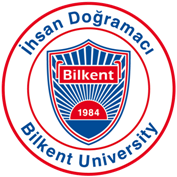Personnel
| Instructor: | Selim Aksoy
(Office: EA 423, Email:  ) )
|
|---|---|
| TA: | Hüseyin Gökhan Akçay (Office: EA 522, Email: akcay[at]cs.bilkent.edu.tr) |
Course Information
| Schedule: | Mon 15:40-17:30, Wed 15:40-16:30 (EB 203) |
|---|---|
| Office hours: | Selim Aksoy (Wed 13:40-15:30) Hüseyin Gökhan Akçay (TBD) |
| Catalog description: | Image acquisition, sampling and quantization. Spatial domain processing. Image enhancement. Texture analysis. Edge detection. Frequency domain processing. Color image processing. Mathematical morphology. Image segmentation and region representations. Statistical and structural scene descriptions. Applications. |
| Course emphasis and goals: | This course provides an introduction to image analysis and computer vision for undergraduates. We will start with low-level vision (early processing) techniques such as binary image analysis, filtering, edge detection and texture analysis. Then, we will cover mid-level vision topics such as image segmentation and feature extraction in detail. Finally, we will do case studies on several applications such as image retrieval and classification. The emphasis will be on feature extraction and image representations for recognition. |
| Prerequisites: | Good programming background, data structures, linear algebra, vector calculus, basics of signal processing. No prior knowledge of image processing or computer vision is assumed. |
Texts
- L. G. Shapiro and G. C. Stockman, Computer Vision, Prentice Hall, 2001.
- R. C. Gonzalez and R. E. Woods, Digital Image Processing, 3rd edition, Prentice Hall, 2008.
- D. A. Forsyth and J. Ponce, Computer Vision: A Modern Approach, Prentice Hall, 2002.
- D. H. Ballard and C. M. Brown, Computer Vision, Prentice Hall, 1982.
Lecture Schedule
Chapters |
Contents |
|---|---|
Introduction(Feb 11) |
Topics:
|
Digital Image Fundamentals(Feb 13, 18) |
Topics:
Readings:
References:
Software:
|
Binary Image Analysis(Feb 20, 25, 27) |
Topics:
Readings:
Software:
|
Linear Filtering[ Slides: Part 1 (pps | pdf) | Part 2 (pps | pdf) ] (Mar 3, 5) |
Topics:
Readings:
Software:
|
Edge Detection(Mar 10, 12) |
Topics:
Readings:
References:
Software:
|
Pattern Recognition Overview[ Slides: Part 1 | Part 2 | Part 3 ] (Mar 17) |
Topics:
Readings:
References:
Software:
|
Local Feature Detectors(Mar 19, 24) |
Topics:
References:
Software:
|
Color Image Processing(Mar 26) |
Topics:
Readings:
|
Texture Analysis(Mar 31, Apr 2) |
Topics:
Readings:
|
Image Segmentation(Apr 7, 9) |
Topics:
Readings:
References:
Software:
|
Representation and Description(Apr 14, 16, 28) |
Topics:
Readings:
References:
|
Case Studies[ Slides: Part 1 (pps | pdf) ] | Part 2 (pps | pdf) ] (Apr 30, May 5, 7, 12, 14, 20) |
Topics:
References:
|
Exams
- Midterm exam will be held at EB 101 at 18:00-20:00 on May 2, 2008. The exam will cover all topics from the beginning of the semester until the end of the representation and description chapter. You are allowed to bring the lecture notes (slides).
- There will be at least two in-class quizzes.
Homework
- Homework assignment 1: description | data (Due: March 14, 2008 as online submission)
- Homework assignment 2: description | data | software (Due: April 7, 2008 as online submission)
- Homework assignment 3: description | data (Due: May 9, 2008 as online submission)
Please make sure you fully understand the late submission policy and the honor code for assignments in the syllabus. Cheating and plagiarism on homework assignments will be punished according to the regulations of the University as described in the Bilkent University Policy on Academic Honesty / Öğrenci Disiplin İlke ve Kuralları.
Project
The goal of the project is to develop an image classification system for object recognition in remotely sensed (satellite and airborne) images. Classification will be performed using pixel level and region level features.
- Project description and data are available.
- You must submit the final report and the developed code as a single archive file (e.g., zip, tar, rar) using the online form by 23:59 on May 26, 2008. No late submission is allowed for project reports.
- Presentations will be made on May 29, 2008 (exact time will be announced later).
- The reports are expected to be around 6 pages and must follow the IEEE Computer Society two-column format as described in their examples and templates. Try to follow the format as closely as possible.
Project teams:
- Mehmet Can Kurt, Ali Osman Ulusoy
- Mehmet Cagri Kasapoglu, Altan Altundemir
- Tekin Alp Uzun, Fatih Tetiker
- Celal Cigir, Omer Faruk Uzar, Cem Aksoy
- Burak Ozek, Murat Torun
- Ali Osman Isik, Mehmet Oner Yalcin, Gokhan Urul
- Ahmet Bugra Koksal, Ali Can Taselmas, Ahmet Ufuk Benli
- Huseyin Vural, Cigdem Ardahan
- Engin Altintop, Hakan Moray
- Emre Dirican, Gurel Erceis
Grading Policy
| Homework: | 40% |
| Quiz: | 10% |
| Exam: | 20% |
| Project: | 25% |
| Class participation: | 5% |
Related Links
- Previous semesters for CS 484
- Shapiro and Stockman book
- Gonzales and Woods book
- Forsyth and Ponce book
- Ballard and Brown book
- Software resources
- Matlab tutorials
- Data resources
- Other image analysis / computer vision courses
- Others
